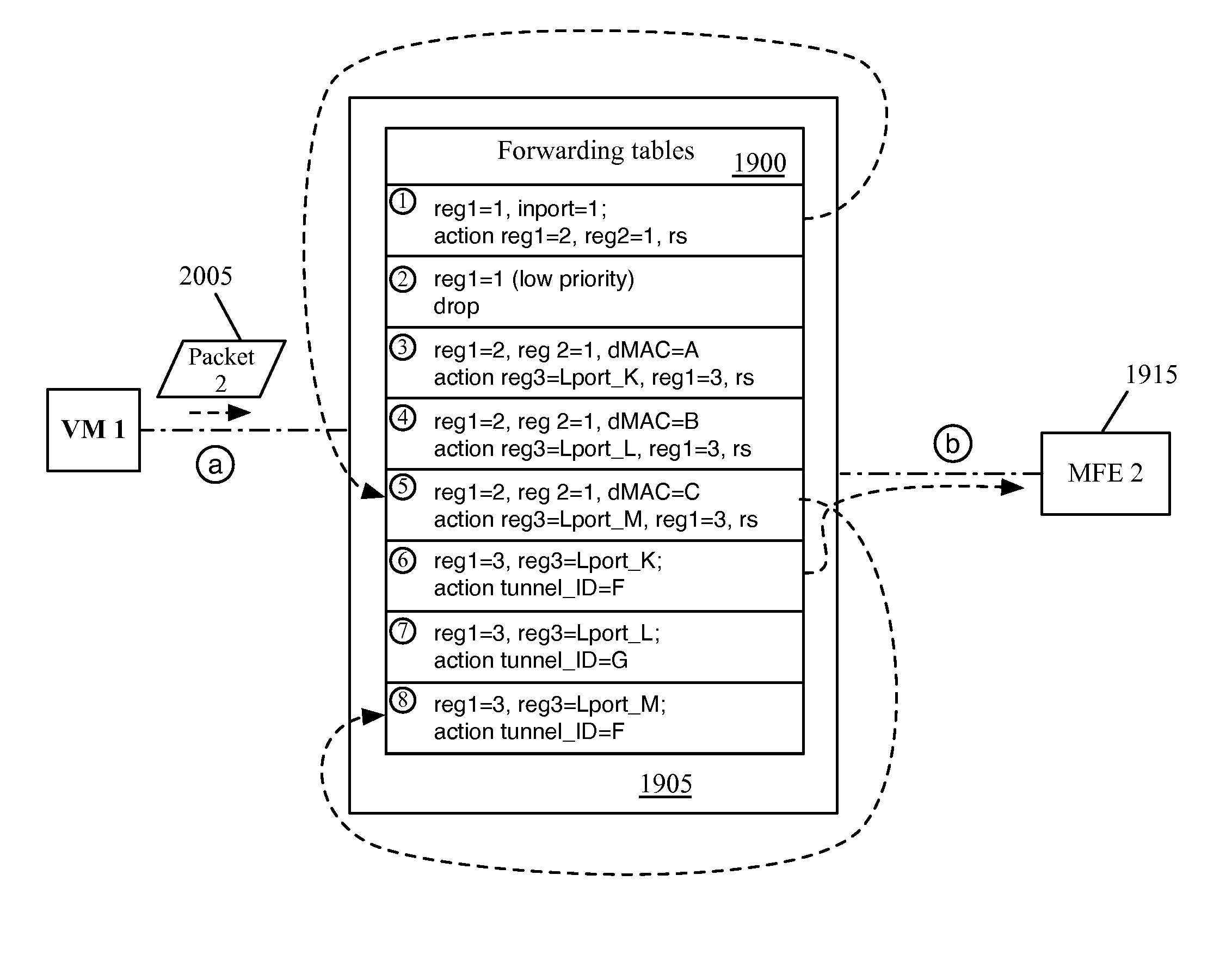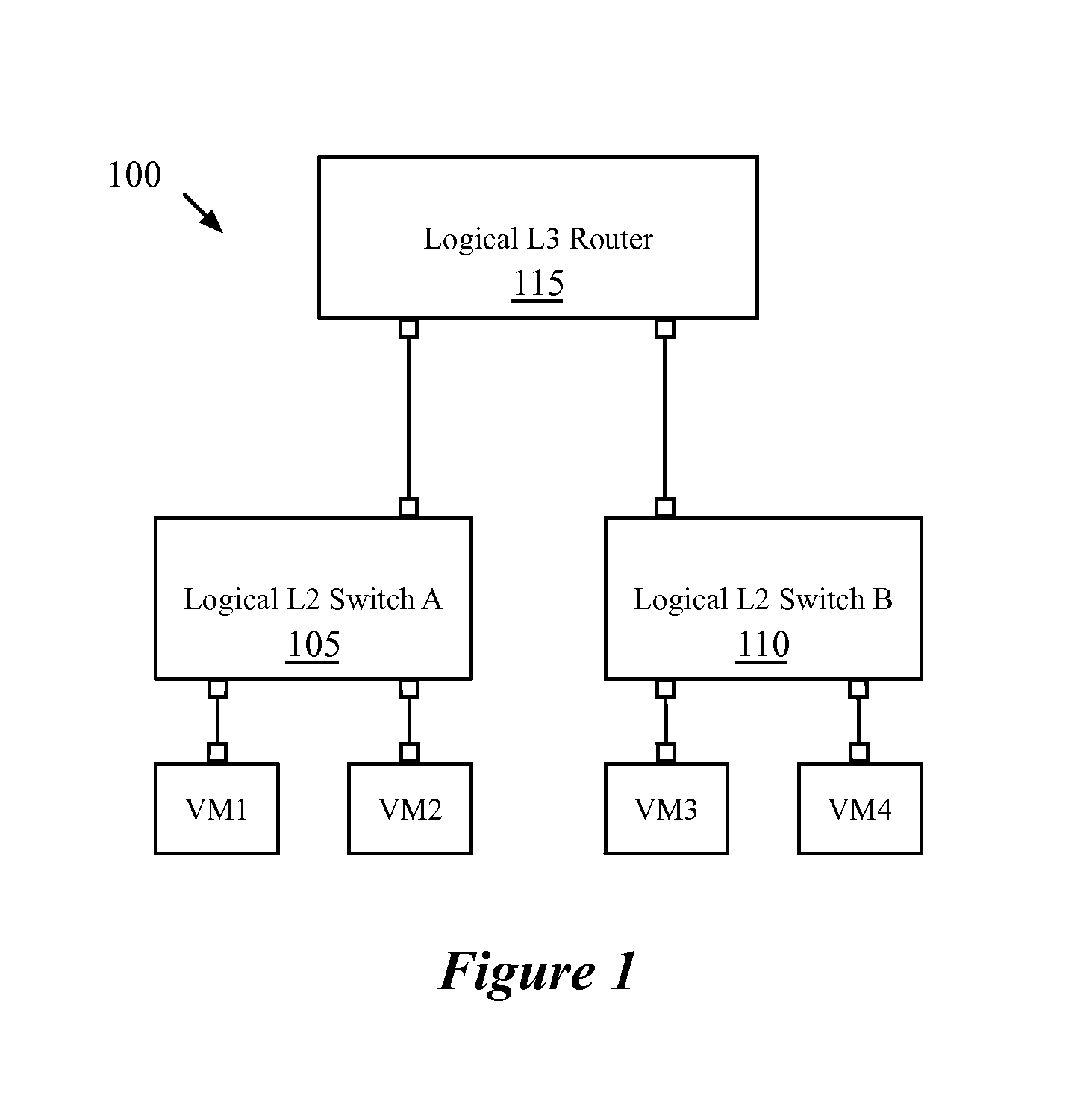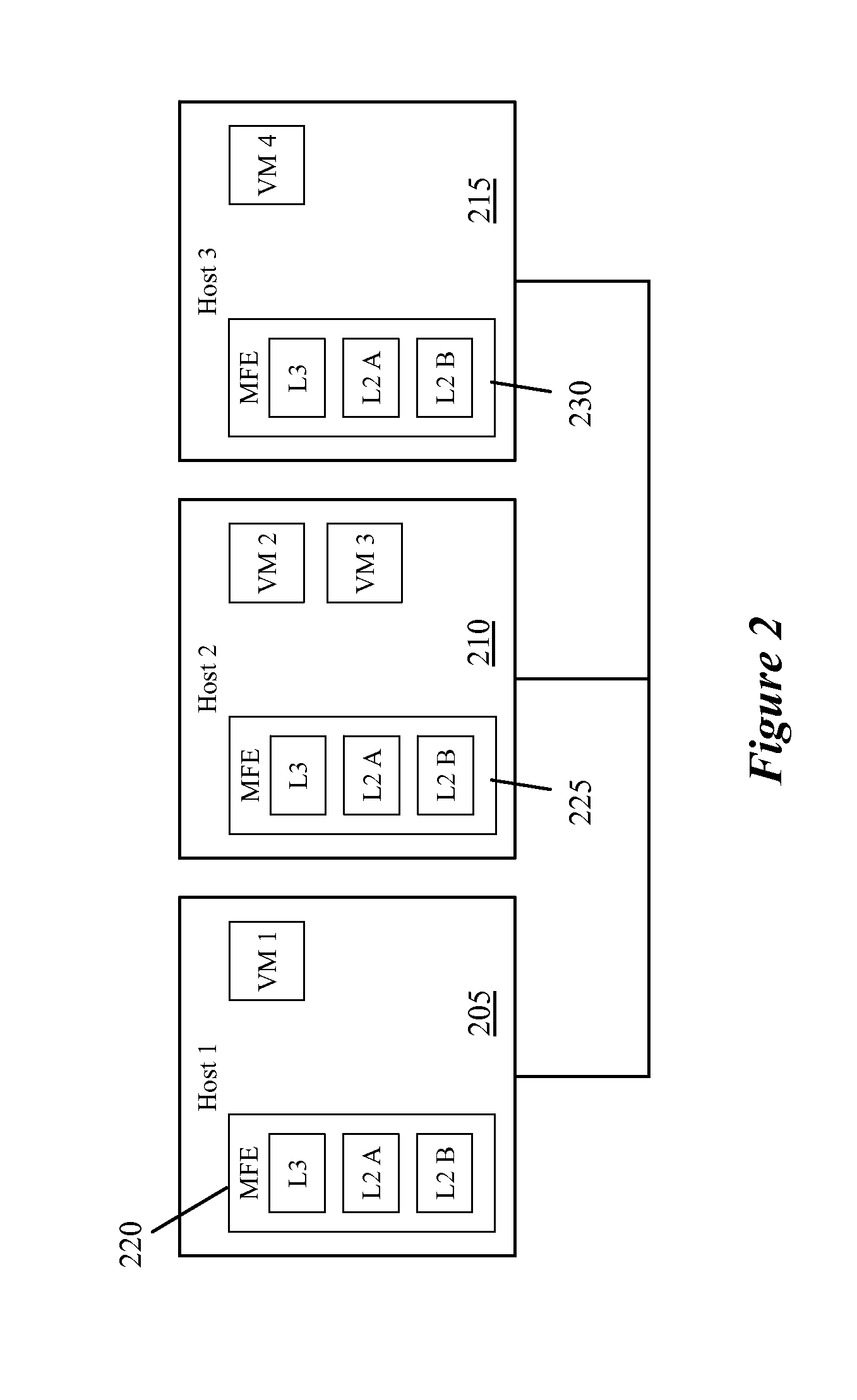Using Headerspace Analysis to Identify Classes of Packets
a headerspace analysis and packet technology, applied in the field of headerspace analysis to identify packet classes, can solve the problems of difficult to determine whether every single one of the flow entries is necessary, and difficult to determine which features (e.g., etc.) depend on
- Summary
- Abstract
- Description
- Claims
- Application Information
AI Technical Summary
Benefits of technology
Problems solved by technology
Method used
Image
Examples
Embodiment Construction
[0032]Some embodiments provide novel techniques for analyzing the flow entries for distribution to one or more managed forwarding elements in a system. Some embodiments represent packet headers and corresponding metadata (referred to generally as “packet headers”) as a set of fields, and model the flow entries as transfer functions on the fields representing packet headers. Using these techniques, some embodiments determine flow entries that will not be used in a managed forwarding element. In addition, or alternatively, some embodiments use the analysis to identify classes of packets to use for testing an implementation of the system.
[0033]To perform these operations, some embodiments use headerspace analysis, which analyzes the bits or fields of an entire packet header in order to analyze the networks (e.g., production networks) through which the packets will be sent. Some embodiments of the invention provide a network controller that uses headerspace analysis to analyze the flow ...
PUM
 Login to View More
Login to View More Abstract
Description
Claims
Application Information
 Login to View More
Login to View More - R&D
- Intellectual Property
- Life Sciences
- Materials
- Tech Scout
- Unparalleled Data Quality
- Higher Quality Content
- 60% Fewer Hallucinations
Browse by: Latest US Patents, China's latest patents, Technical Efficacy Thesaurus, Application Domain, Technology Topic, Popular Technical Reports.
© 2025 PatSnap. All rights reserved.Legal|Privacy policy|Modern Slavery Act Transparency Statement|Sitemap|About US| Contact US: help@patsnap.com



